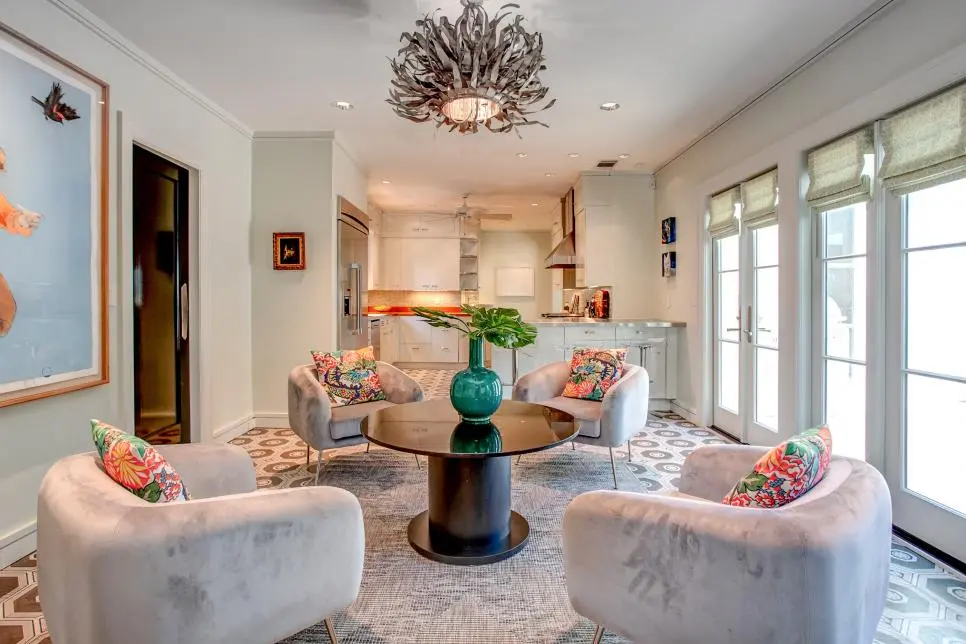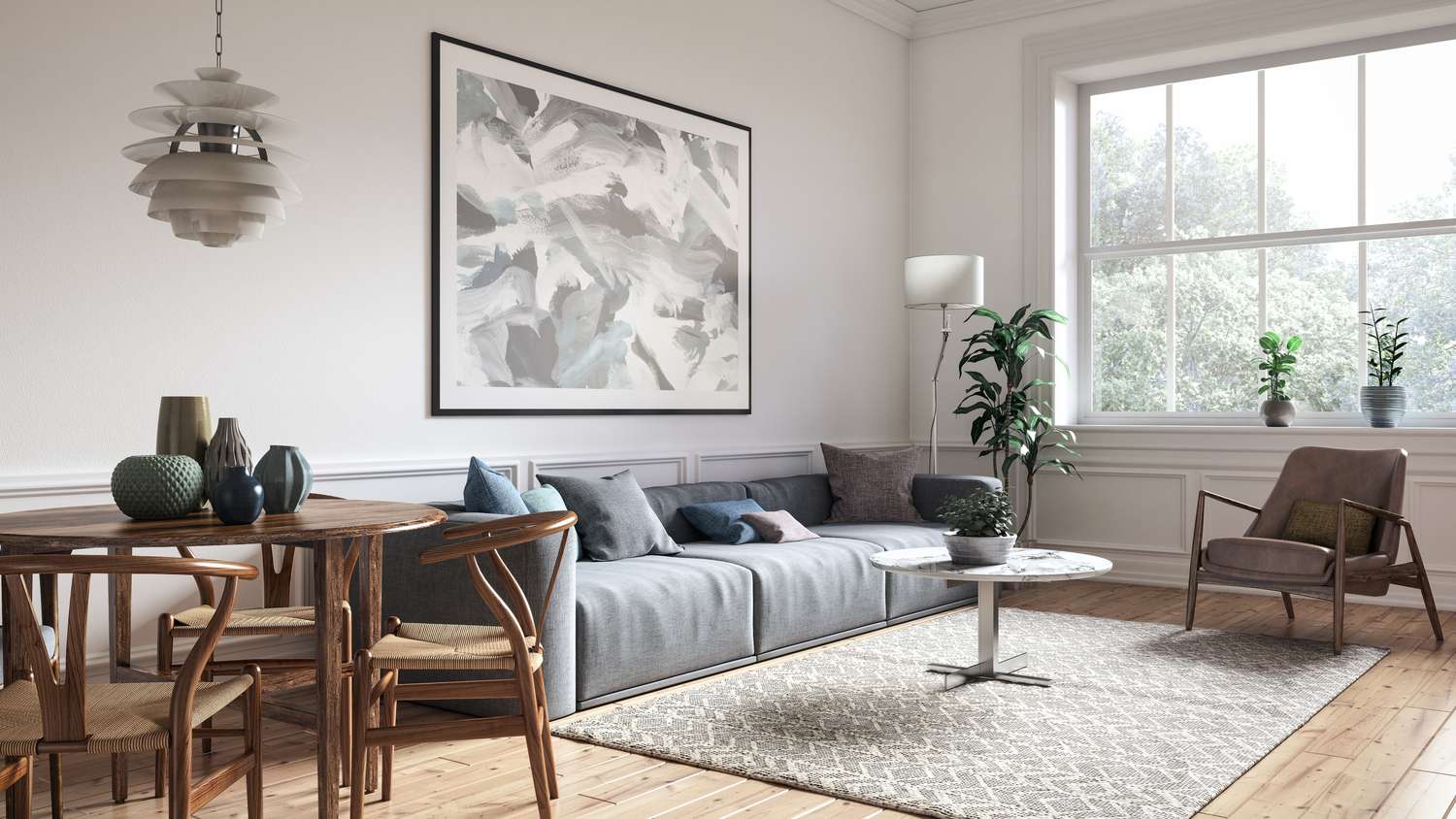Our homes are more than just physical structures; they are the backdrop of our daily lives, influencing our emotions, behaviors, and overall well-being. The design of our living spaces plays a crucial role in shaping our experiences and perceptions. This article explores the fascinating realm of home design psychology, shedding light on how intentional choices in color, lighting, greenery, and spatial arrangement can contribute to a harmonious and uplifting atmosphere within our homes.
Color Psychology
Color is a powerful tool that evokes emotions and creates distinct moods within a space. Understanding color psychology is key to harnessing its potential in home design.
- Calming Blues and Greens: Soft blues and greens have a calming effect, making them ideal for spaces where relaxation is a priority. Bedrooms and living rooms can benefit from these tranquil hues, fostering a serene environment that promotes rest and rejuvenation.
- Energizing Reds and Yellows: Warm tones like reds and yellows are known for their energizing properties. Consider incorporating these colors in areas where socialization and activity occur, such as the kitchen or dining room. However, moderation is key, as overly vibrant hues may become overwhelming over time.
- Neutral Serenity: Neutrals such as whites, beiges, and grays provide a versatile and timeless backdrop. They offer a sense of simplicity and cleanliness, allowing homeowners to experiment with pops of color through accessories or artwork.
Harnessing Natural Light
Natural light is a fundamental element in home design that significantly influences both physical and mental well-being. Exposure to natural light has been linked to improved mood, increased productivity, and better sleep quality. Here’s how to maximize natural light in your home:
Strategic Window Placement
Position furniture and decor to allow for unobstructed access to windows. Consider light, sheer curtains that enable sunlight to filter through, creating a soft and inviting ambiance.
Mirrors to Reflect Light
Mirrors can amplify natural light by reflecting it throughout the space. Place mirrors strategically to bounce light into darker corners, creating a brighter, more open feel.
Glass Doors and Skylights
Installing glass doors or skylights enhances the influx of natural light, creating a seamless connection between indoor and outdoor spaces. This brightens the home and provides a sense of openness and connectivity with nature.
Bringing the Outdoors In: The Green Touch of Indoor Plants
Indoor plants do more than enhance visual appeal—they contribute to better air quality, reduce stress, and foster a connection with nature. Incorporating greenery into home design is a powerful way to promote well-being:
Air-Purifying Plants
Choose indoor plants known for their air-purifying qualities, such as snake plants, pothos, or spider plants. These add a touch of green to your decor and contribute to a healthier indoor environment.
Biophilic Design
Embrace biophilic design principles by integrating natural elements throughout your home. This could involve incorporating wooden furniture, stone accents, or even a small indoor water feature. These elements evoke a sense of the outdoors, promoting a calming and grounding effect.
Personalized Green Spaces
Create dedicated green spaces within your home, whether it’s a cluster of potted plants in a sunny corner or a vertical garden on a wall. These spaces enhance aesthetics and offer a personal oasis for relaxation.
Furniture Arrangement for Function and Flow
The arrangement of furniture in a home goes beyond aesthetics—it influences the functionality and flow of the space. Thoughtful placement can enhance comfort and promote positive interactions:
- Open and Inviting Layouts: Consider open layouts that facilitate easy movement between rooms. This creates a sense of spaciousness and encourages socialization and connection among family members.
- Multi-Functional Furniture: Opt for multi-functional furniture that serves multiple purposes. Items like storage ottomans, convertible sofas, or folding tables can maximize space and adapt to changing needs.
- Balance and Symmetry: Strive for balance and symmetry in furniture arrangement to create a visually pleasing and harmonious environment. This can contribute to a sense of order and tranquility within the space. Utilizing wall space to clear up the floor and expand your living area can help with the symmetry of a room. Mount the TV to the wall and clear up more living space for you.
Personalization and Mindful Design Choices
Beyond the specific elements discussed, the key to creating a home that boosts mood and well-being lies in personalization and mindfulness. Consider the following tips:
- Meaningful Art and Decor: Choose artwork and decor that hold personal significance or evoke positive emotions. Surrounding yourself with items that bring joy can profoundly impact your mood.
- Declutter for Mental Clarity: A clutter-free environment promotes mental clarity and reduces stress. Regularly declutter and organize your living spaces to create a sense of order and tranquility.
- Comfortable Textures and Fabrics: Pay attention to the textures and fabrics used in your home. Soft, comfortable materials contribute to a cozy and inviting atmosphere, enhancing the overall comfort of your living spaces.
Designing Homes for Well-Being
The psychology of home design goes beyond mere aesthetics—it’s about creating environments that nourish our well-being and enrich our daily lives. By understanding the psychological impact of color, embracing natural light and greenery, arranging furniture thoughtfully, and personalizing our spaces, we can transform our homes into havens of positivity and comfort.
Ultimately, the goal is to design homes that align with our individual needs, preferences, and lifestyles. Whether it’s the calming hues on our walls, the gentle flow of natural light, the soothing presence of indoor plants, or the arrangement of furniture that encourages connection, every element contributes to the overall tapestry of well-being within our homes. As we embark on this journey of intentional design, let our homes not just be spaces we inhabit, but reflections of the positive and uplifting experiences we seek in our lives.





